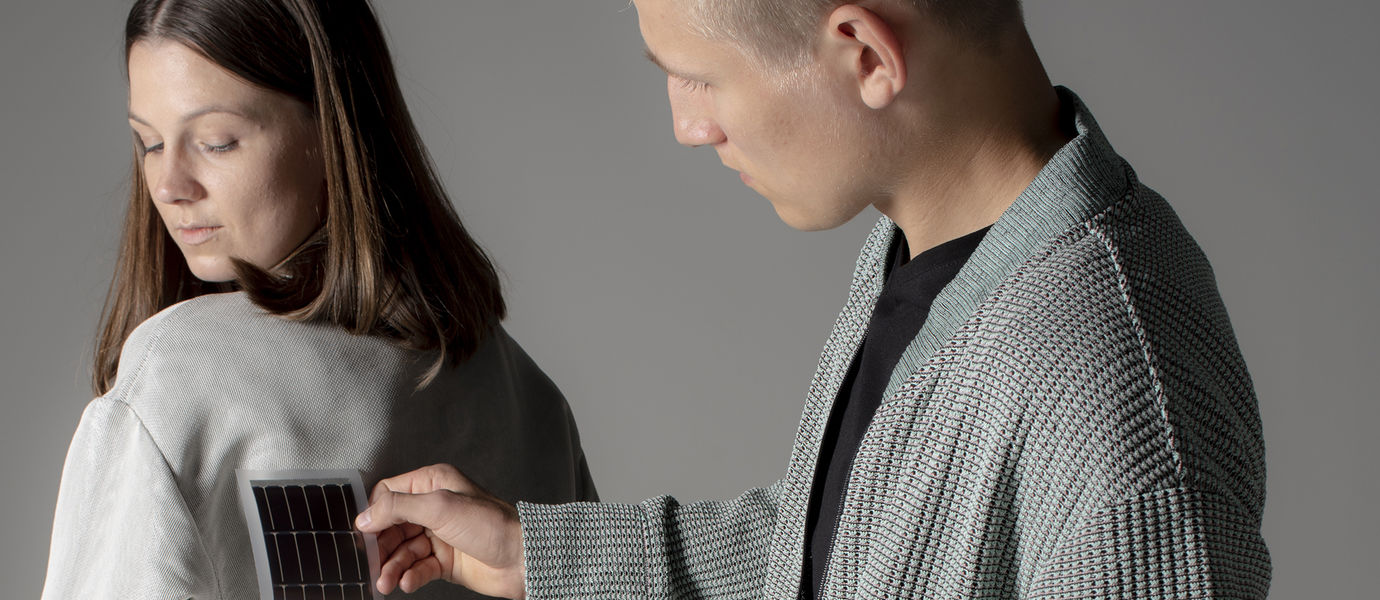
During the three-year Sun-powered Textiles project, researchers at Aalto University’s departments of physics and design developed a method of adhering solar cells to textiles in a way that makes them resistant to machine-washing and, at the same time, makes them less of an aesthetic problem. The researchers also took measures to make the solar cell-infused textiles recyclable, writes the Aalto University in a press release.
The machine-washability of commercially available solar cells hasn’t been studied previously to this extent. ”We hypothesized that the solar cell structure might break down in the wash as the cells weren’t designed to be machine-washable. The washing is a stressful process where the textiles and cells are subject to pressure and collisions, especially during spinning,” says Elina Ilén, project specialist at the Aalto University Department of Design.
Cells are now washable
The researchers laminated a solar cell component between textiles in a water-tight polyurethane film to make the component machine-washable. The textiles containing the solar cell component were then washed dozens of times in 40 degrees Celsius. Physics researcher Farid Elsehrawy then measured the output of the solar cells after each round in the washing machine.
Five of the eight samples retained their efficiency, and three lost about 20 percent of their power. None of the cells or the textiles were damaged during the process.
”Now that the solar cell laminated between textiles has been proved to be machine-washable, we have to protect the rest of the components. Our idea is that all of the electric components of the smart textile could be in the same container with the solar cell. That would give us a machine-washable electronic device that’s embedded in textiles and never needs to have its its battery charged or replaced,” says Janne Halme, university lecturer at the Department of Applied Physics.
Lasting power and efficient recycling
The commercial solar cells used in the study comprised of a single crystal and were made of silicon. They can detect light that is invisible to the naked eye, which is what most of sunlight actually is. Infrared is an example of such invisible light.
Hiding the textile eats up some of the solar cell’s power but improves its durability, as it’s better protected from the outside world.
”A cell on the surface also dominates the look of the clothing, turning it into a robot-like piece of armour. A cell on the inside makes the product much more visually palatable and affords the opportunity to visually design the product according to the user’s wants and needs,” Ilén says.

Humidity gauges and self-adjusting curtains
The amount of energy the cells receive depends on their size, quantity and location. The amount of energy that’s needed is mandated by what the use-application is. A crucial aspect is how frequently the application sends data. The most energy-hungry functions include sending information, doing calculations, and projecting on screens. That is why solar cells hidden in textiles won’t be enough to charge a smartphone or a smartwatch but are suitable for things like measuring temperature and humidity.
The research team thinks that work clothing is the most potential application for solar cell textiles right now. They are thicker than regular clothes, so the cells have limited impact on the clothing’s look and feel.
Selected for you!
Innovation Origins is the European platform for innovation news. In addition to the many reports from our own editors in 15 European countries, we select the most important press releases from reliable sources. This way you can stay up to date on what is happening in the world of innovation. Are you or do you know an organization that should not be missing from our list of selected sources? Then report to our editorial team.



